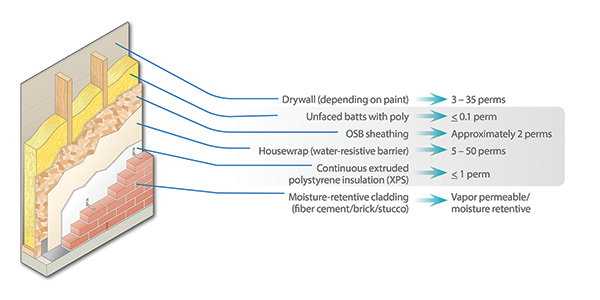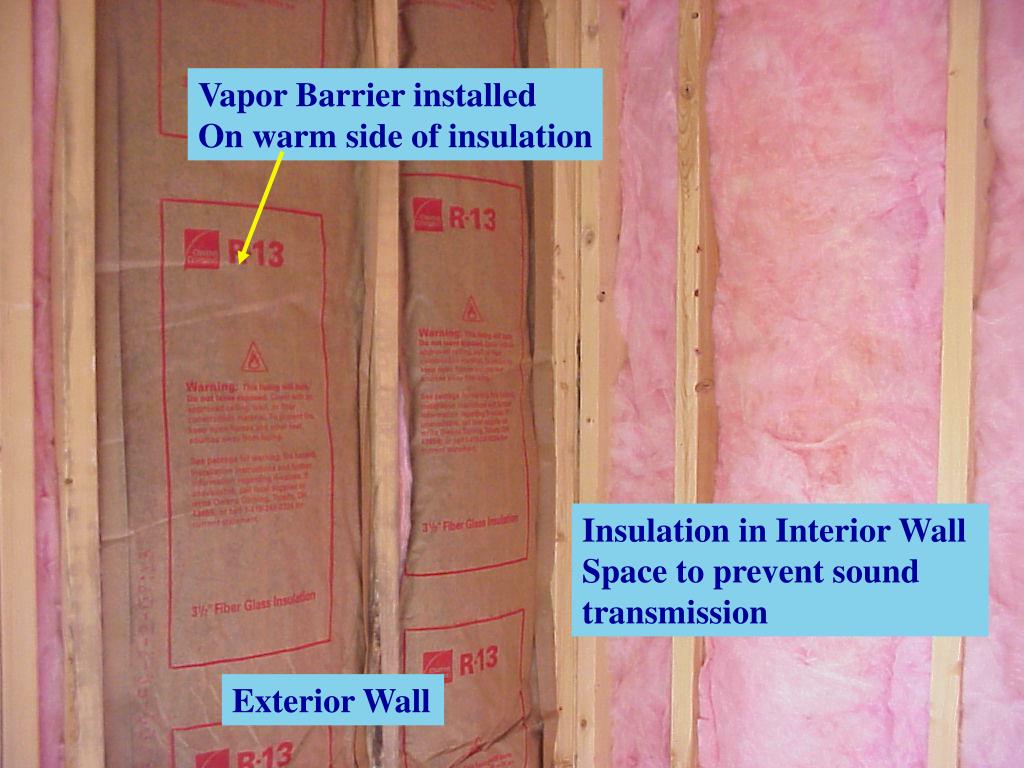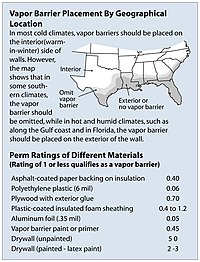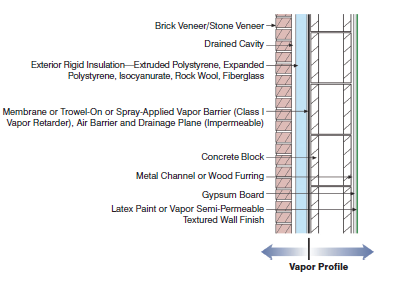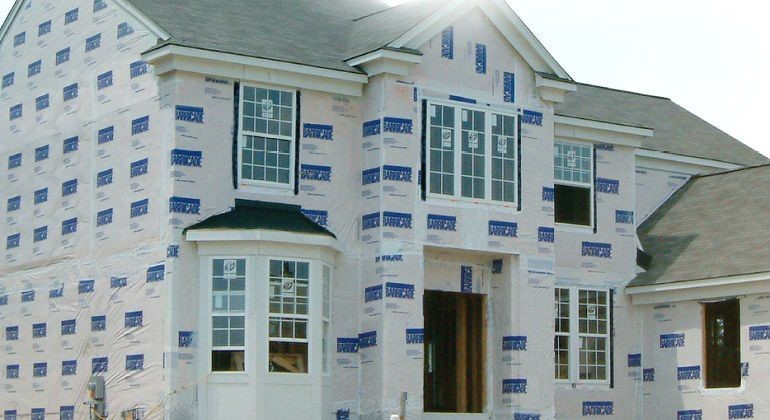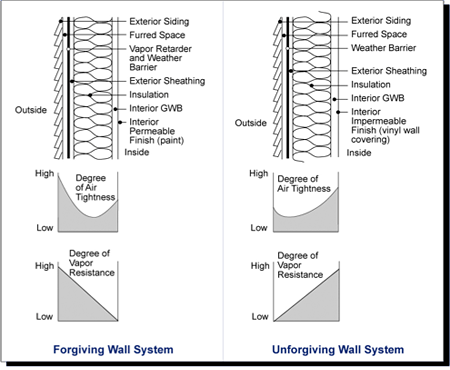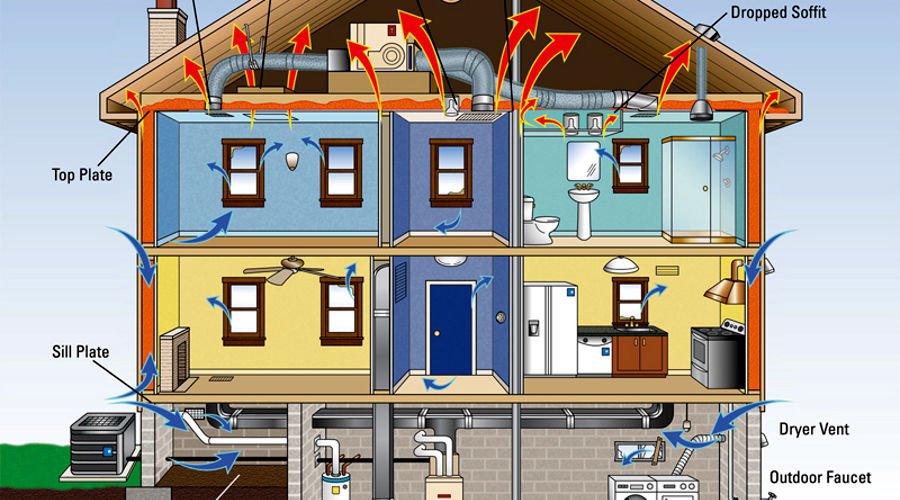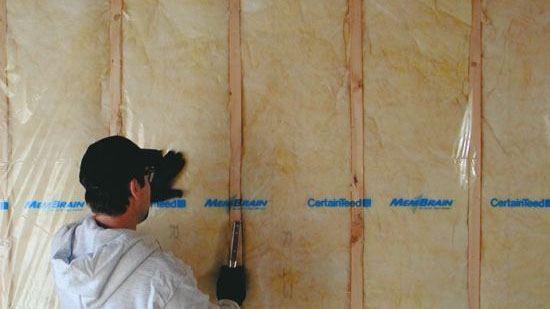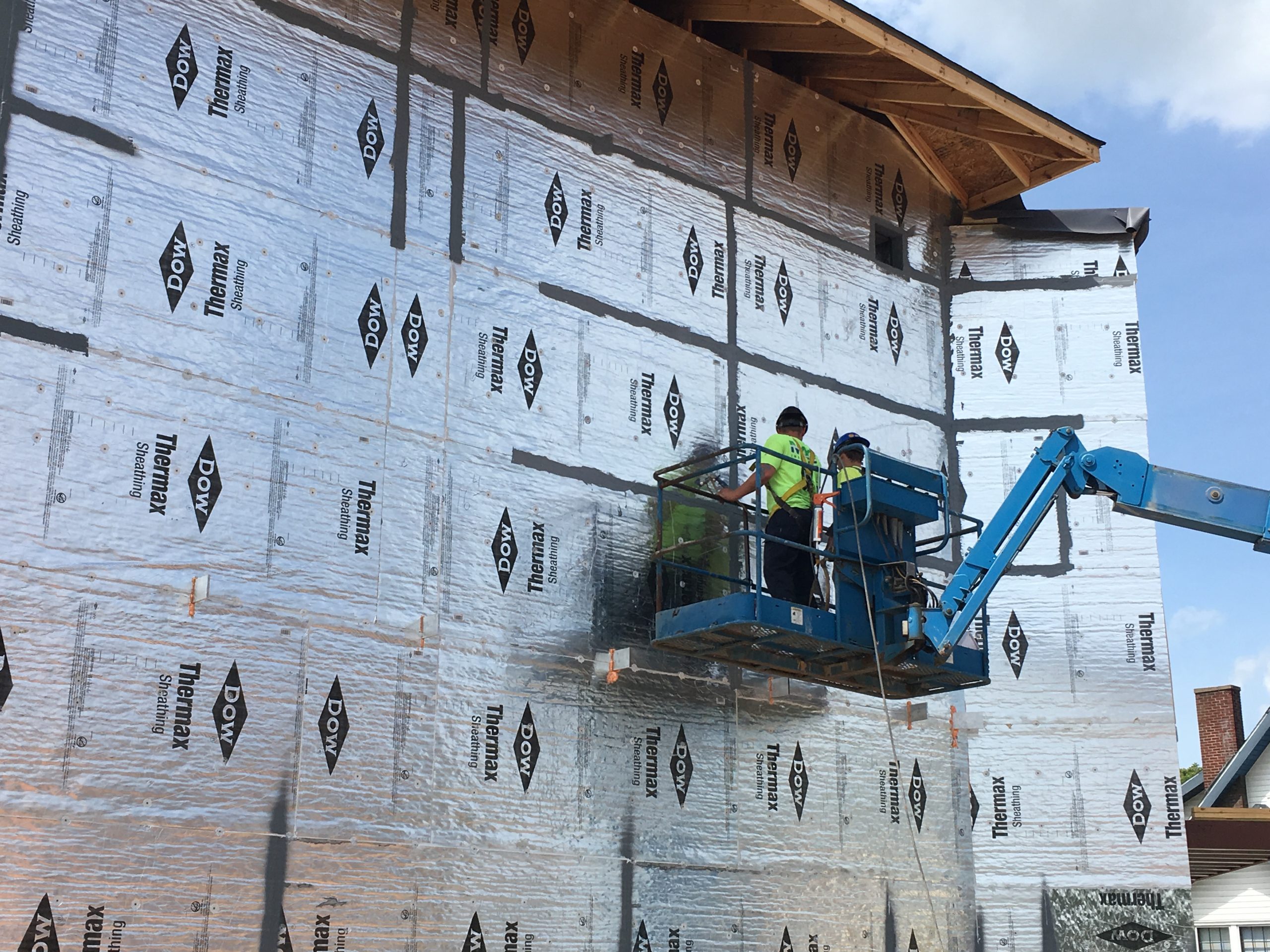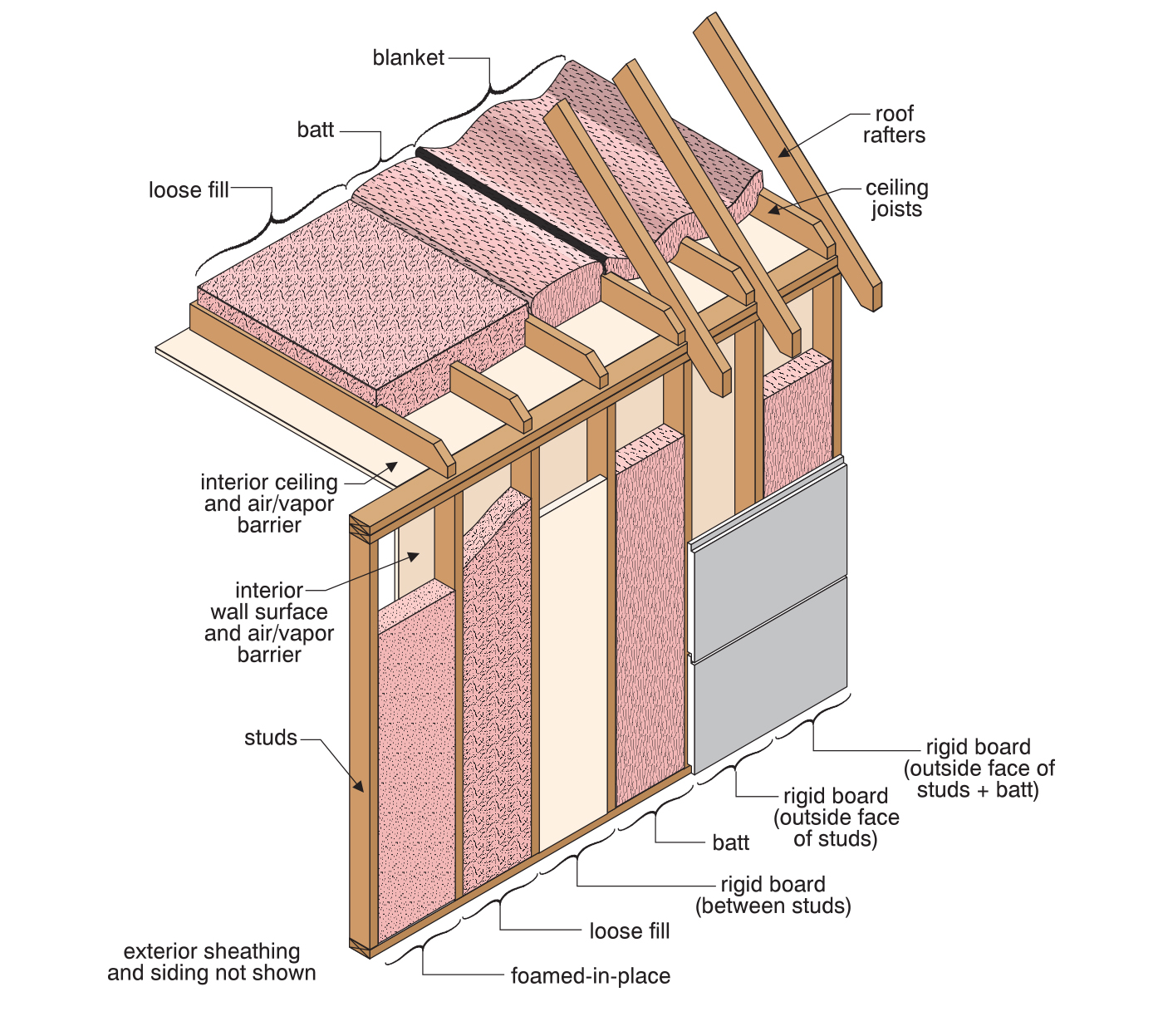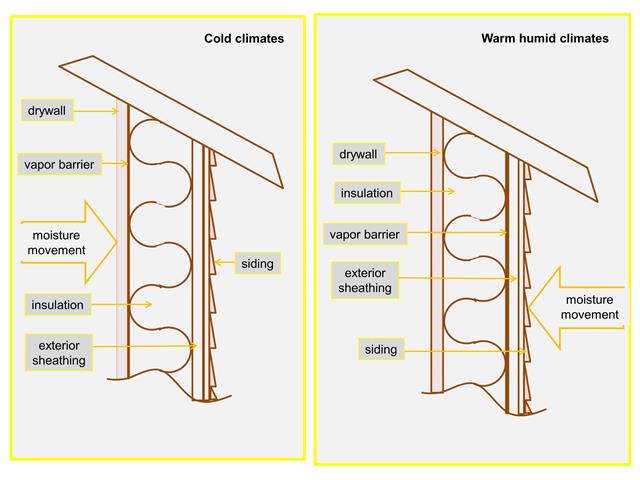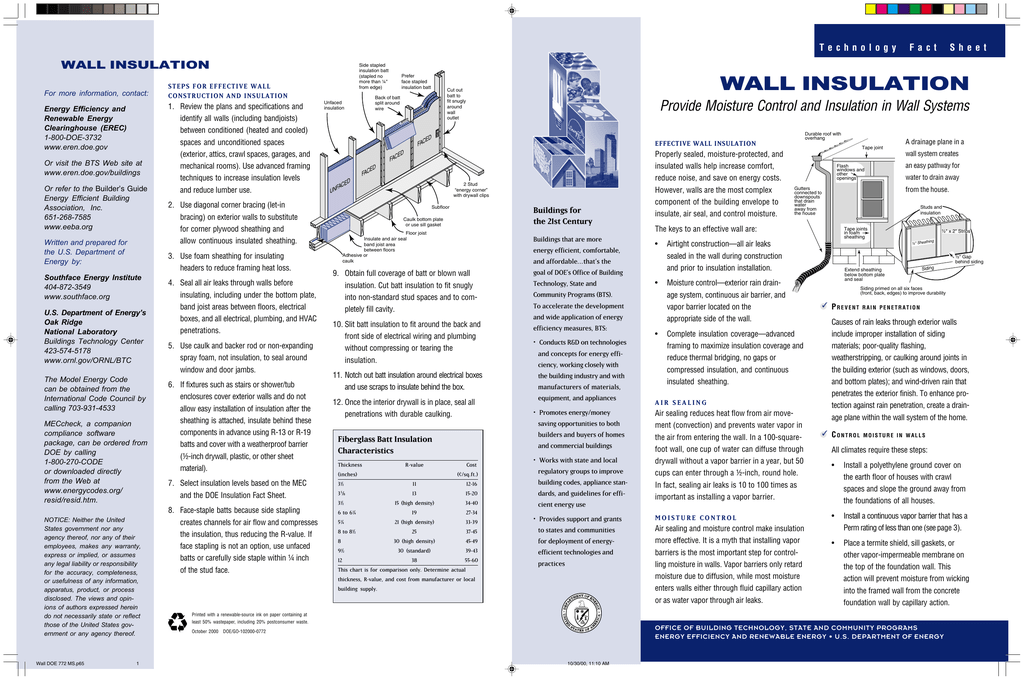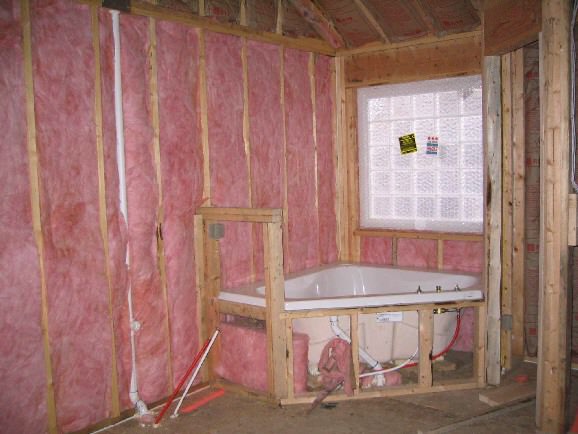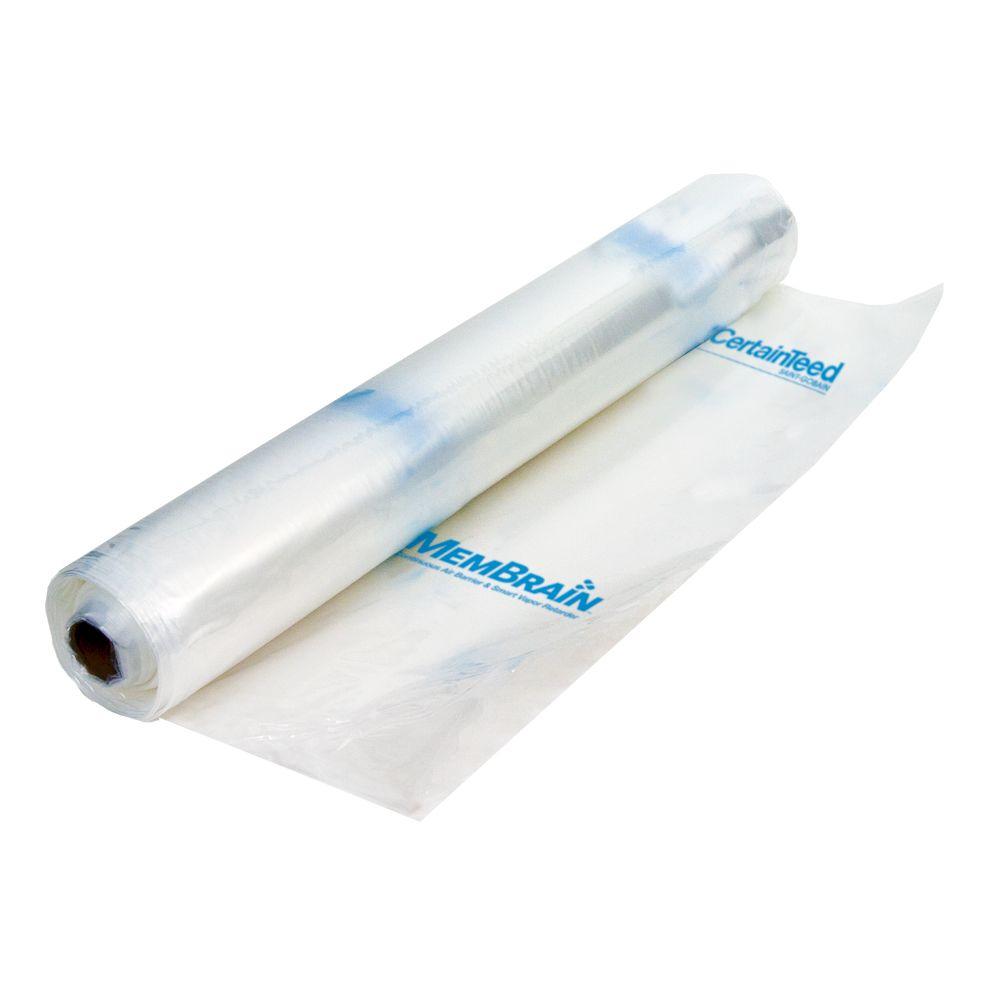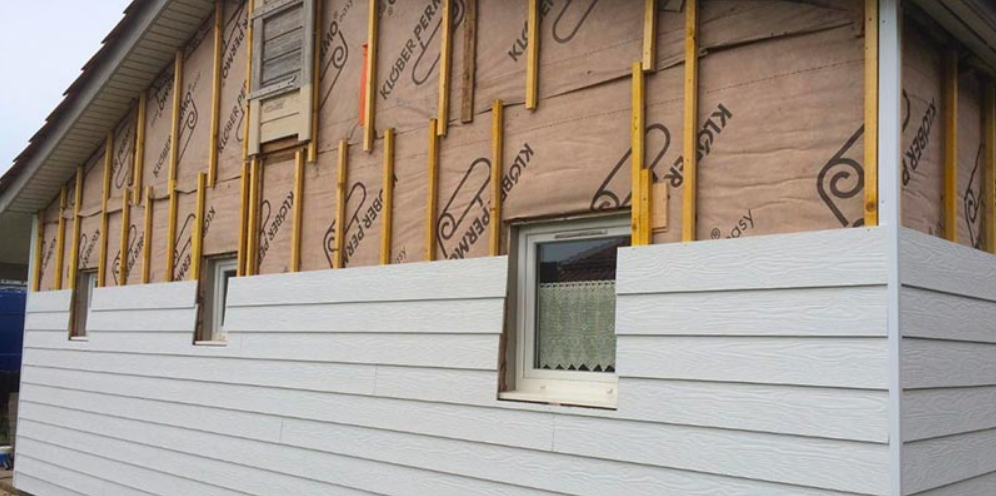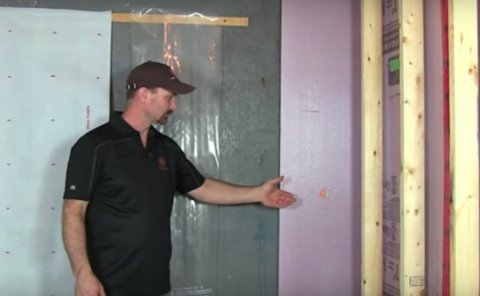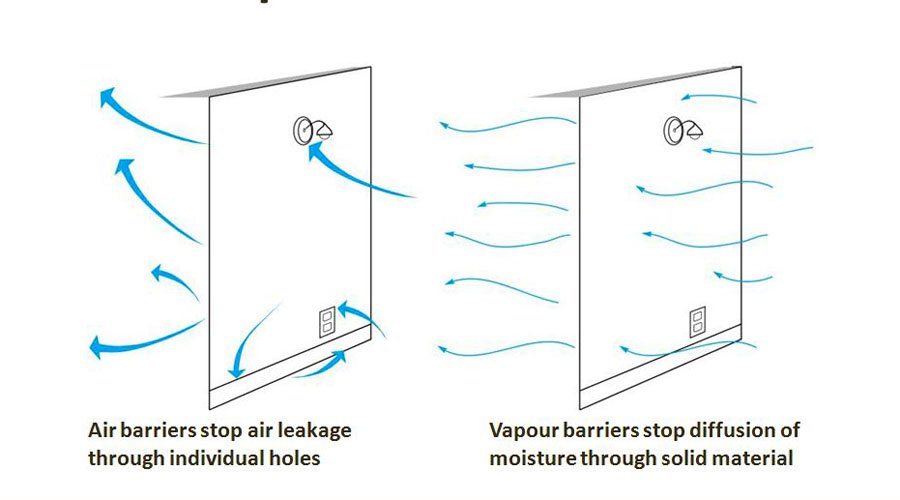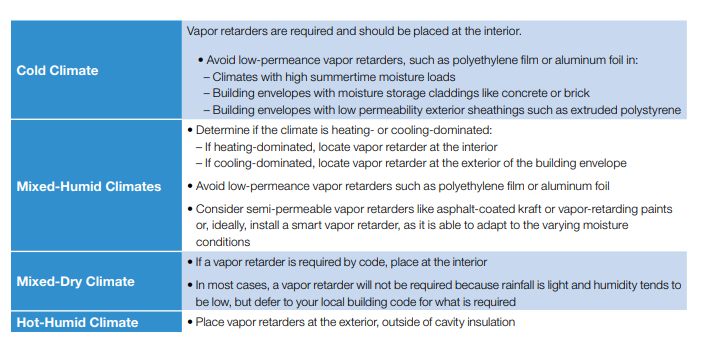Vapor Barrier Exterior Wall Insulation
Vapor barriers when to use them when to not.

Vapor barrier exterior wall insulation. Plastic specifically 6 mil polyethylene plastic is. Of course you can have moisure problems here even without the exterior vapor barrier because of what bill rose calls the rule of material wetting. On the interior walls between the finished and unfinished areas i was going to use rockwool insulation with 12 sheetrock on both sides. Very hot and humid climates may benefit from an exterior vapor barrier that keeps outside humidity from penetrating into walls.
For insulation to work properly on exterior walls and have a long functional lifespan the wall system needs to have all the appropriate components including an air barrier a vapor barrier vapor control layer well balanced insulation and be attached in a way that doesnt compromise the r value of the insulation. Vapor barriers applied over the face of the insulation provide additional benefits in the fight against moisture. Xps foam extruded polystyrene before building the interior walls to create a thermal breakvapor barrier. Without a vapor barrier in place condensation inside the walls could ruin the insulation and promote the growth of harmful mold and bacteria.
On the exterior concrete walls i glued 2 in. But you already know that. Usually composed of a thin film such as polyethylene vapor barriers are used to retard or prevent water vapor diffusion into a wall ceiling or floor during the cold winter. In hot climates any moisture that condenses on the exterior side of the vapor barrier will be drained to the exterior since the vapor barrier is also a drainage plane.
Whether or not you need a vapor retarder hinges on three main factors. A vapor retarder is a material used to prevent water vapor from diffusing into the wall ceiling or floor during the cold winter. On this special edition of the build show matt takes us on a guided tour through the ins and outs of vapor barriers from the studio building. After the insulation is in place you will want to add a vapor retarder sometimes called a vapor barrier if you need one.
Not every wall does. The cool surface is the sheathing assuming no exterior insulation. This barrier is meant to keep moisture from getting to the insulation in the walls and ceilings and it is required by building codes when insulating most houses. If water vapor diffuses or infiltrates into the wall cavity and finds the cool surface moisture problems can occur.
This wall assembly will dry from the vapor barrier inwards and will dry from the vapor barrier outwards.








